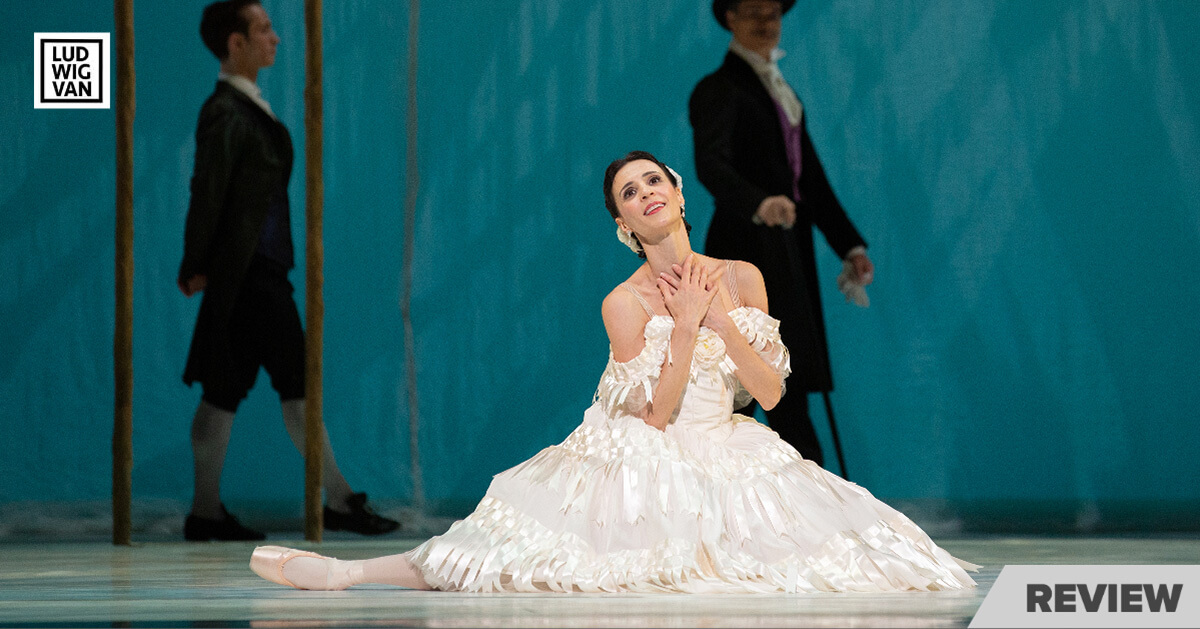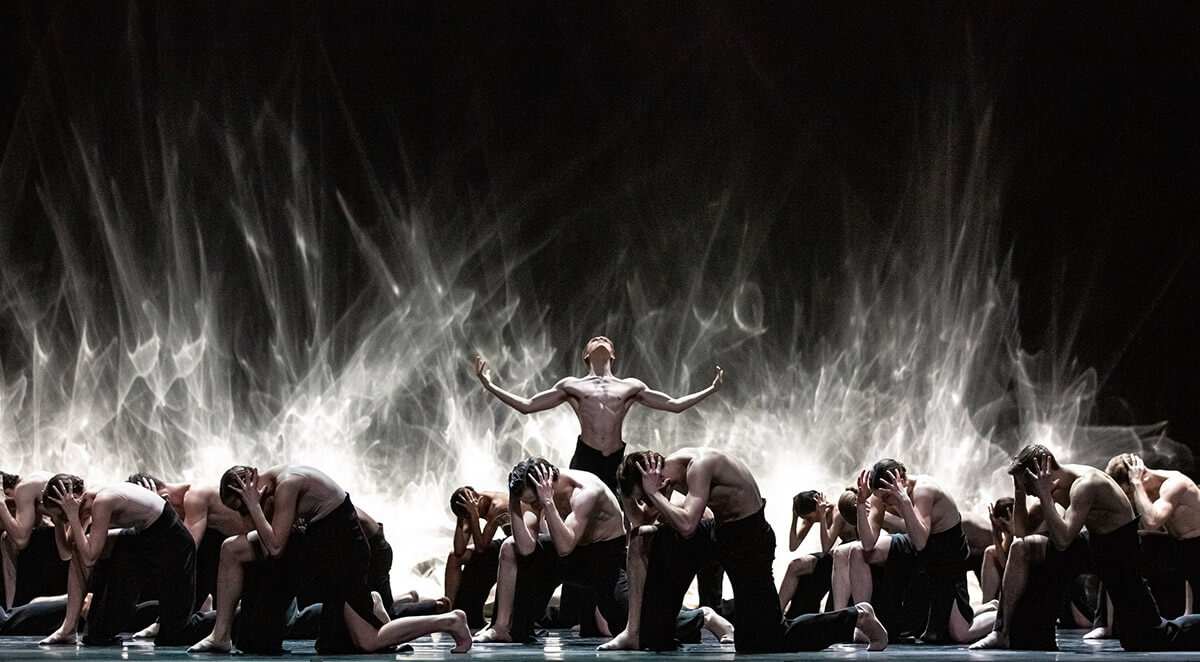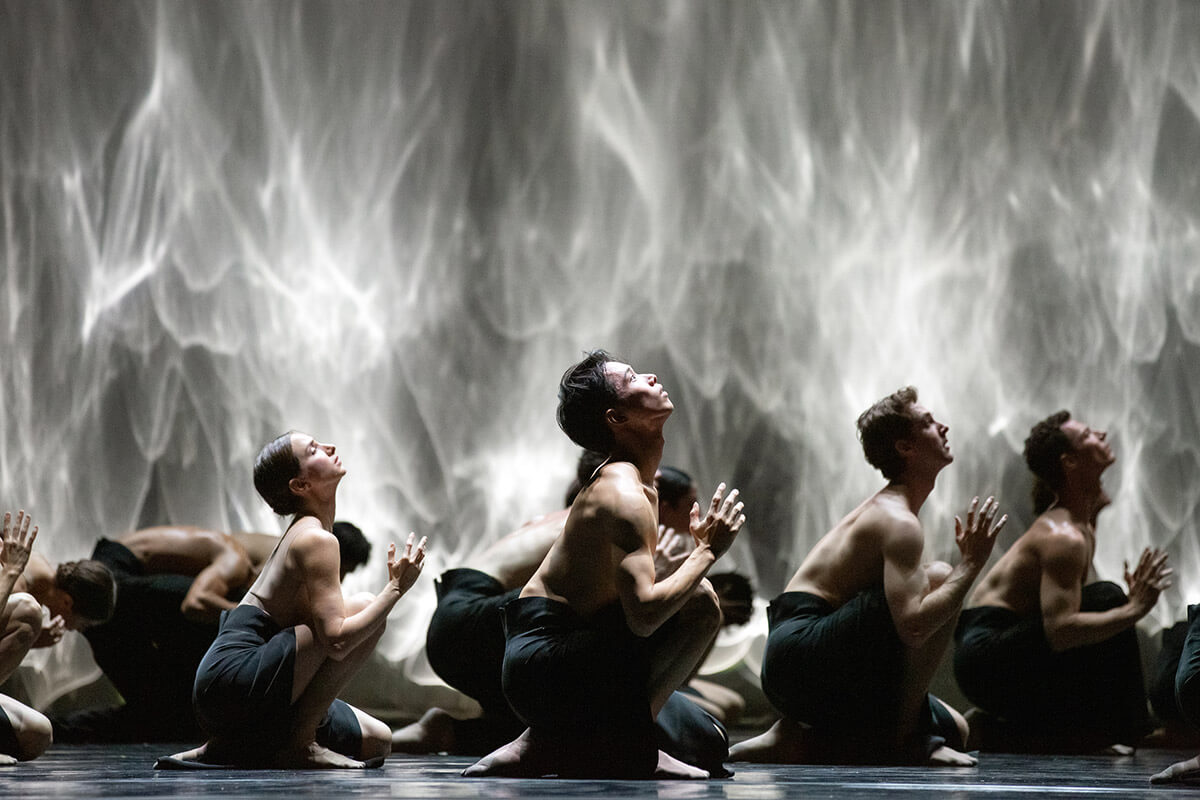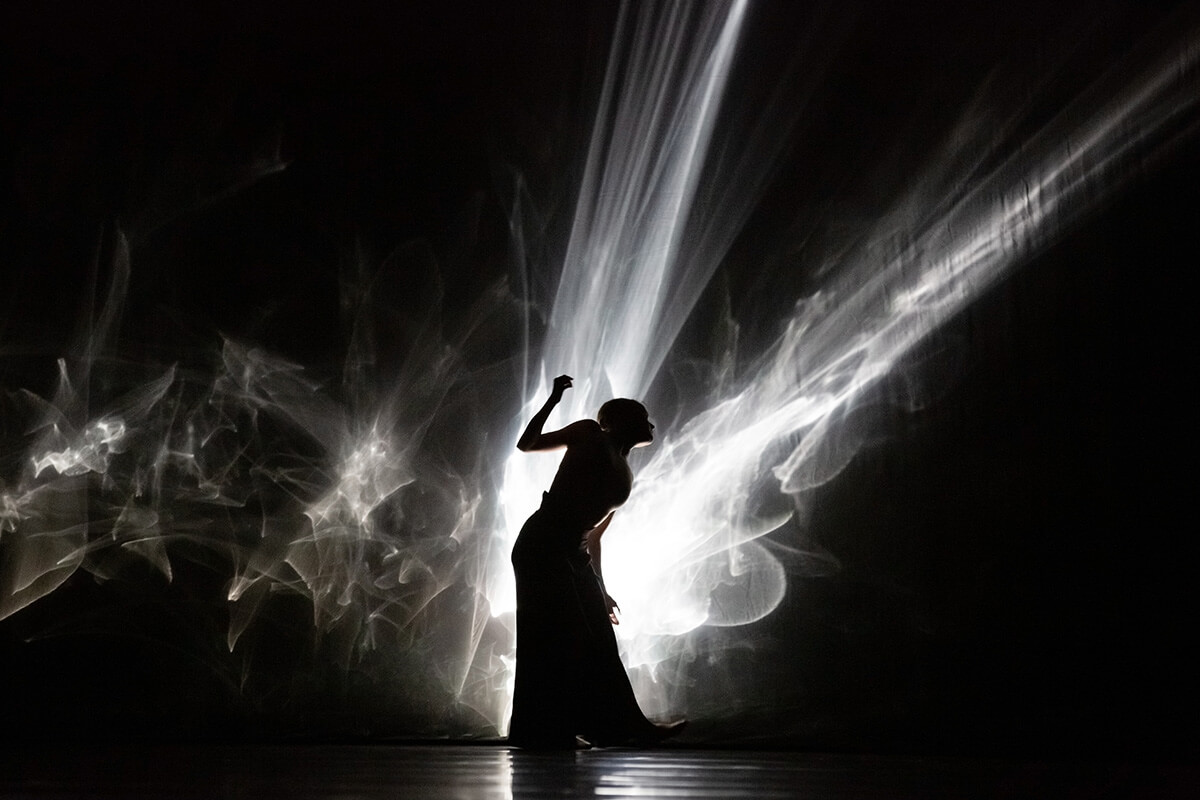
The National Ballet of Canada Mixed Program/Chroma by Wayne McGregor, Marguerite and Armand by Sir Frederick Ashton, and Angels’ Atlas by Crystal Pite, Four Seasons Centre, Feb. 29 to Mar. 7, 2020. Details here.
A mixed program that contains the farewell of the great ballerina Greta Hodgkinson, the premiere of a new work by Canadian treasure Crystal Pite, and the welcome remount of a beloved ballet is bound to be rich in choreography. The evening is certainly a feast of dancing, if not totally flawless.
Let’s start with Pite, a Canadian choreographer who is acclaimed all over the world for stunning works that present movement that is profound, provocative and powerful. She is also fearless at taking on large groups, and the world premiere of Angels’ Atlas features thirty-six dancers.
As Pite explains in her program note, the genesis of the piece came out of a technical system developed by set designer, Jay Gower Taylor, that manipulates reflected light. For Angels’ Atlas, Taylor worked with lighting designer Tom Visser to create projected images that are absolutely breathtaking in their shimmering beauty. The screen is filled with explosions of crystalline constellations that are a kaleidoscope of gorgeous, shifting patterns that vary in degrees of intensity. They seem to come straight from the cosmos, carrying with them other-world majesty. Although the projections are shades of white, black, grey and silver, the overwhelming impact of this reflected light is as glorious as any rainbow filled with colour.

If an atlas is a book of maps, then the reflected light of Pite’s Angels’ Atlas conjures up ephemeral maps of the heavenly spheres where time and space have no earthly meaning. In truth, Angels’ Atlas, is a religious experience. Composer Owen Belton has created a gentle electronica score that speaks to the mysteries of the unknown, interpolated by the haunting reverie of Tchaikovsky’s Liturgy of St. John Chrysostom, and Morten Lauridsen’s O Magnum Mysterium. Costume designer Nancy Bryant has clothed the dancers in black split pants that swirl around them like overlarge skirts. The men are bare-chested, while the women are in skin-toned halters so their upper bodies and flashes of legs take on a silver glow, as if they are the living embodiment of the reflected light.
If I seem to be taking a long time to get to the choreography itself, it was first important to set the scene, to describe the environment that contains the dance. There are seven soloists — Heather Ogden, Harrison James, Jordana Daumec, Spencer Hack, Donald Thom, Hannah Galway and Siphesihle November – who through a series of duets and solos, announce the themes upon which the large cast expands. The movement is very physical and bold, filled with vigorous turns and swooping limb thrusts that are low to the floor. The churning skirts of the costumes add to, at times, a chaotic stage picture. The dancers engage in angst-filled frenetic gestures. They convey longing, or fear or hope. At other times they seem to be caught up in a religious trance. There are also several illusions to death, and the fight to survive. It is going to take repeated viewings to unpack the depth of meaning in Angels’ Atlas, but suffice it to say that Pite has created another masterpiece.
Back in the day, when I first saw Margot Fonteyn and Rudolph Nureyev perform Ashton’s Marguerite and Armand (1963) in London, I thought it one of the most romantic ballets I had ever experienced. Set to the orchestrated score of a Liszt piano sonata, with lavish Victorian period set and costumes by the famous designer-cum-photographer Cecil Beaton, the ballet was the epitome of passion, even melodrama. It is in this famous Ashton work that the peerless Greta Hodgkinson is making her farewell after thirty years with the National.

The story is taken from Alexandre Dumas’ 1848 novel, La Dame aux camelias, which was also the inspiration for Verdi’s 1853 opera La traviata. The courtesan Marguerite (Hodgkinson) who is suffering from tuberculosis, leaves her sugar daddy Duke (Jonathan Renna) for a money-strapped young lover Armand (Guillaume Côté). She parts with Armand because his father (Piotr Stanczyk) disapproves of their liaison. Marguerite goes back to the Duke, but Armand insults her at a party by throwing money at her, thinking that his impecuniousness was the reason why she left him. Too late Armand discovers the truth and she dies in his arms. Ashton begins his ballet with the dying Marguerite recalling scenes from her life. Kudos to piano soloist Zhenya Vitort for her spirited performance.
Hodgkinson is exquisite. She has always been the most expressive of dancers and she beautifully captures Marguerite’s vulnerability, along with her allure. She is the epitome of femininity, and she takes the audience on an emotional rollercoaster as she moves through love and despair. Côté matches her in intensity and is a perfect picture of rambunctious youth. For Hodgkinson, it is a glamorous finale to a glittering career.
That being said, I was shocked to find that Marguerite and Armand has not aged well. I love Ashton’s ballets, but this is just poor choreography. I never noticed that Marguerite’s admirers just mill around, that the Duke and the Father barely react, that Armand is all bump and thump, and that Marguerite’s movement is limited at best. It’s pretty to look at, but poorly conceived. Nonetheless, Hodgkinson makes the most out of what Ashton has given her, and she was rewarded with a prolonged standing ovation. In her time, the dancer could do everything, from the fragile Giselle, to the technical classicism of Odette/Odile, to any manner of hard-edged contemporary ballet. Hodgkinson was an all-round hitter whose every performance was top of the line, and she will be missed.

English choreographer Wayne McGregor’s Chroma (2006) was an instant hit when the piece entered the National’s repertoire in 2010. The ten dancers, which include some of the National’s best classicists, are asked to extend their bodies to the limit in McGregor’s startling and eye-catching quirky physicality. Clothed in Moritz Junge’s earth-tone tops and shorts, and danced against John Pawson’s sleek white modernist set, cleverly lit for mood changes by Lucy Carter, the dancers’ bodies become the centre of the architecture and provide the living colour. Abstract though it may be, Chroma, through a series of solos and ensembles, still manages to convey aspects of the human condition in all its complexities. The ballet is truly a McGregor magnum opus.
Once again, the National Ballet Orchestra under conductor David Briskin did a stunning job rendering Chroma’s thundering original score by Joby Talbot, Jack White and The White Stripes. They also gave the emotionalism of the Liszt its fair due for Marguerite and Armand.
#LUDWIGVAN
Want more updates on classical music and opera news and reviews? Follow us on Facebook, Instagram or Twitter for all the latest.
- INTERVIEW | Actor Diego Matamoros Takes On Icon Walt Disney In Soulpepper Production Of Hnath Play - April 16, 2024
- SCRUTINY | Opera In Concert Shine A Light On Verdi’s Seldom Heard La Battaglia Di Legnano - April 9, 2024
- SCRUTINY | Lepage & Côté’s Hamlet Dazzles With Dance And Stagecraft Without Saying Anything New - April 5, 2024



